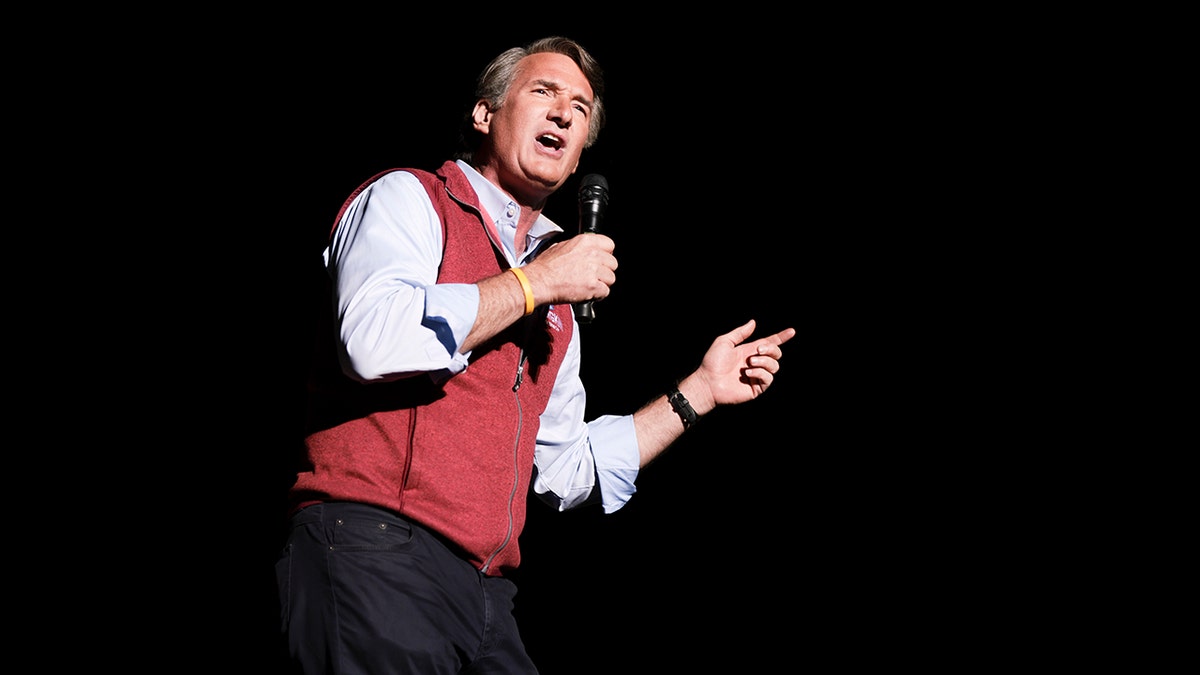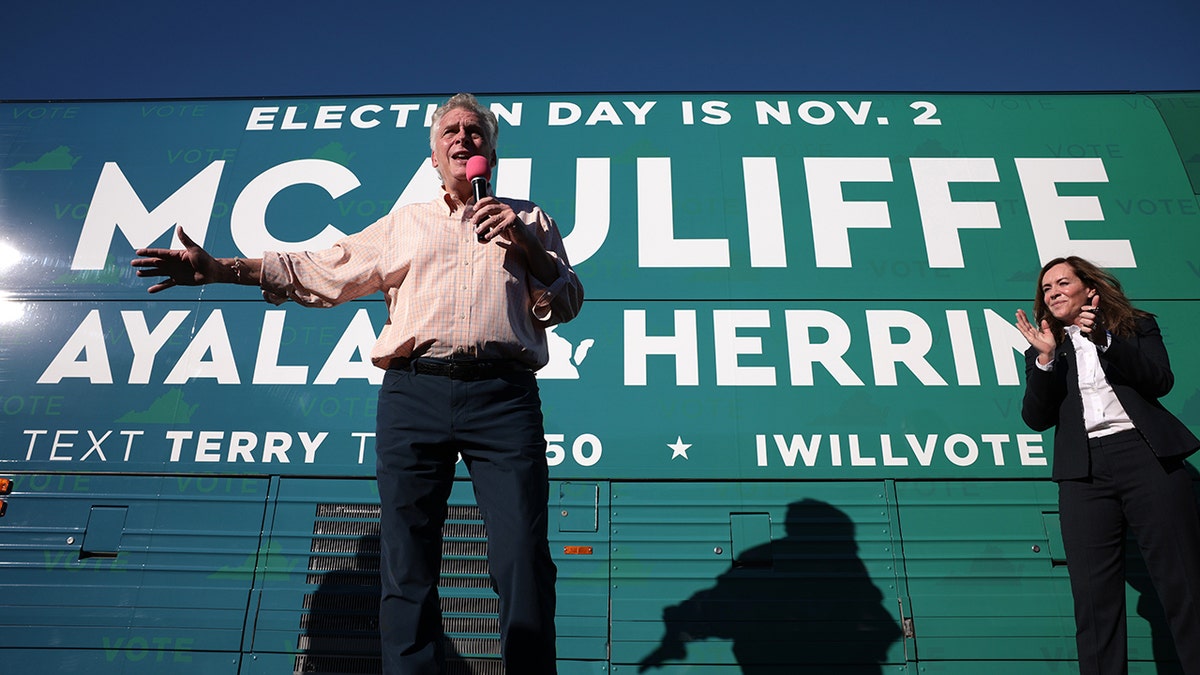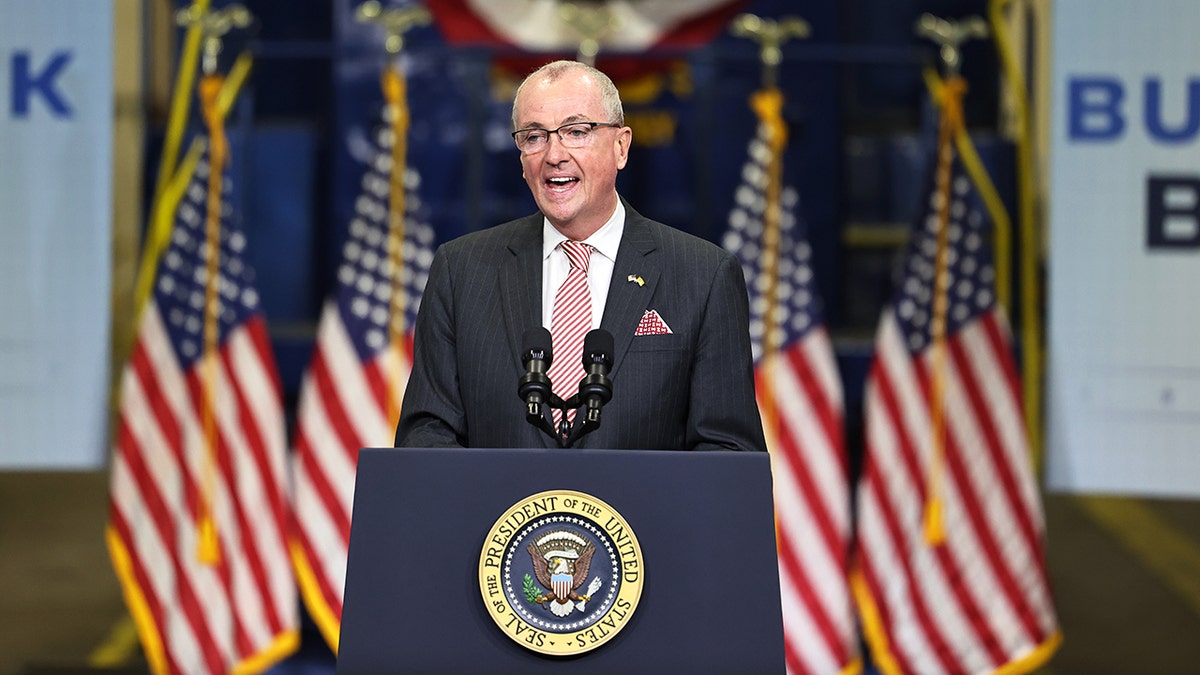Fox News Flash top headlines for November 1
Fox News Flash top headlines are here. Check out what's clicking on Foxnews.com.
Virginia was once a breeding ground for presidents. From George Washington to Woodrow Wilson, the Old Dominion has sent eight men to the White House, more than any other state in the country.
Today, Virginia is better known for the damage it can do to a presidency. With one exception, the state has chosen a governor from the opposite party of the current president at every gubernatorial election in the last 40 years. At best, a loss in Virginia generates a bad news cycle and anxiety about midterms for those in the Oval Office. At worst, it is a sign that the president’s days in power are numbered.
Statistics like these and a late polling surge should give Republican challenger Glenn Youngkin some confidence going into election night. But the one exception mentioned above is Democrat Terry McAuliffe, who won his first term as governor in 2013, following former President Obama's second victory in 2012.

Virginia Republican gubernatorial candidate Glenn Youngkin speaks at a campaign rally at the Loudon County Fairground on Nov. 1 in Leesburg, Virginia. (Anna Moneymaker/Getty Images)
ELECTION DAY: VIRGINIA, NEW JERSEY POLLS OPEN IN GOVERNOR'S RACE SEEN AS REFERENDUM ON BIDEN: LIVE
McAuliffe, now seeking his second term, entered the race as favorite in a state that has leaned blue during the Trump era, and has enjoyed the consistent support of the Democratic machine. Even so, he leaves the trail lagging in the latest Fox News Poll and therefore more uncertain than ever about his political future.
The results in a handful of key counties will decide the fate of the two candidates.
1. Blue ballots in Fairfax County
McAuliffe’s greatest strength heading into the evening is Fairfax County. Observers will find a lot of highly educated and high-income professionals in this corner of the state, a result of its proximity to Washington, D.C. Not only is Fairfax the highest populated county in the "NoVA" northeastern region, it is the highest populated county in the state, and by a large margin (almost 700,000 people). In the last gubernatorial race, Democratic Gov. Ralph Northam picked up 255,000 votes in the county for a margin of 36.7, an enormous haul that equals 10% of the total statewide turnout. Fairfax and its NoVA neighbors are heavily blue areas, with voters who will be motivated by issues like COVID-19 precautions and abortion rights. Depending on how much turnout McAuliffe can drive, their combined weight will give him a solid base tonight.
LAURA INGRAHAM PRAISES GLENN YOUNGKIN FOR TURNING AROUND VIRGINIA GOVERNOR RACE

Democratic gubernatorial candidate, former Virginia Gov. Terry McAuliffe, accompanied by his wife, Dorothy, speaks to supporters while campaigning on a bus tour at the Iron Workers Local Union 79 on Oct 30. in Norfolk, Virginia. (Win McNamee/Getty Images)
2. Battleground suburban counties
Regions with large suburban populations, particularly Loudoun County, Chesterfield County and Richmond City, have emerged as key battlegrounds during the campaign. Expect many voters in these areas to recall education controversies like critical race theory's role in public schools and rising tensions at school board meetings when casting their ballots. Fox News polling indicates that Virginia parents now trust Youngkin on education by a 12-point margin, giving him a significant lead on a major issue in the race.
TRUMP RALLIES VIRGINIA SUPPORTERS TO VOTE FOR GLENN YOUNGKIN
Some analysts note that these suburban counties have shifted toward the Democrats over the last few years. For example, voters in Chesterfield County, which contains several conservative-leaning suburbs, chose Northam by a mere 0.6 points in 2017. Three years later, the county delivered President Biden a 6.7 margin. The results tonight will test whether that swing represents a permanent blue shift affecting both presidential and gubernatorial candidates, or whether it was just a product of former President Trump’s relatively low popularity in Virginia.
Youngkin will likely need to pick up a majority in Chesterfield and similar suburban counties. He’ll also need to gain some ground in larger suburban regions like Loudoun and Richmond that reliably vote Democratic in order to prevail statewide.
3. Swing voters in Virginia Beach City
Virginia Beach City is the highest populated city in the Old Dominion. Located in the southeast corner of Virginia, the city is home to large urban and suburban areas, with income levels and education rates at higher levels than the national average. Virginia Beach is also home to several Navy bases, which translates to a relatively big military population. The GOP will hope to drive turnout in this populous metropolitan area to offset expected heavy losses in the northern cities.
The city was also the highest populated area with a margin of five percentage points or less in the 2017 gubernatorial election, making it a crucial target for both McAuliffe and Youngkin. If either candidate holds a margin of more than five points once a significant portion of the vote has been counted, it may spell trouble for their opponent’s statewide bid.
4. Rural red strongholds
Elections are increasingly a battle between big blue cities and rural red counties, and Virginia is no exception. As the Commonwealth’s large northern cities have become more heavily Democratic, the state’s small rural counties have swung more Republican. Youngkin will rely on large margins in dozens of these counties to win statewide. Look to conservative strongholds in the southwest corner of the state like Tazewell County (GOP margin of 66.5), Scott County (63.7) and Bland County (61.8). These three counties had a combined total turnout of less than 20,000 voters in the last gubernatorial race but had the highest percentage Republican support out of all 133 counties and cities.
Keep an eye on the five pivot counties in Virginia as well. These are the counties that supported Obama in 2008 and 2012, then flipped to Trump in 2016 and stayed loyal in 2020. The five counties (Buckingham, Caroline, Essex, Nelson and Westmoreland) are a mix of small town and rural areas, scattered in the central and mideastern parts of the state. Gubernatorial races are very different to presidential races, but in any race, the direction of these pivot counties give us some indication of longer-term electoral shifts.
5. The bellwethers
Bellwethers are never a sure thing. Just ask voters in Ohio, who lost a bellwether streak dating back to 1960 when they chose Trump in the 2020 election. Even so, when a county aligns with the statewide winner in 10 out of the last 10 gubernatorial races, it’s worth keeping an eye on during election night. There are two counties that meet that description: Northampton County, on Virginia’s Eastern Shore, and Prince Edward County, located toward the south of the state.
If you see both of these small counties turn in one direction before the statewide race is called, take it as a small hint (and nothing more) of what may come.
Quick notes
- Polls and first results: Polls close at 7 p.m. This year, the Virginia Department of Elections is telling counties to report mail ballots and early in-person voting ballots first, followed by Election Day vote votes. Given that Democrats tend to favor early voting more than Republicans, expect the initial numbers on election night to skew blue.
- Recounts: Polling indicates that this will be a close race, making a recount possible in the weeks after the election. In Virginia, there are no mandatory recounts, but a candidate can request one if there is a difference of 1% or less of the total votes of the two candidates.
CLICK HERE TO GET THE FOX NEWS APP

Gov. Phil Murphy speaks about President Biden's Bipartisan Infrastructure Deal and Build Back Better Agenda at the NJ Transit Meadowlands Maintenance Complex on Oct. 25, 2021, in Kearny, New Jersey. Voters will soon decide if Murphy will get a second term in office. ( Michael M. Santiago/Getty Images))
- Also on Nov. 2: In addition to the Virginia gubernatorial race, voters also go to the polls in New Jersey to decide if Democratic Gov. Phil Murphy will return for a second term. Murphy is the favorite, but polls have tightened in recent weeks. And look out for special U.S. congressional elections in Ohio’s 11th and 15th districts. Both seats are expected to remain with the same party as the candidates who last held them, leaving a slim House margin intact. Voters across the country will also decide on a raft of ballot measures. Most notably, voters in Minneapolis will decide whether to replace their police department.
Watch special coverage of the Virginia gubernatorial election live on Fox News, beginning with "The Story with Martha MacCallum" at 3 p.m. ET. As polls close at 7 p.m., tune in for "Democracy 2021: Virginia Showdown" with Bret Baier and Martha MacCallum, and watch for updates with "America's Newsroom" anchor Bill Hemmer throughout the evening.


























